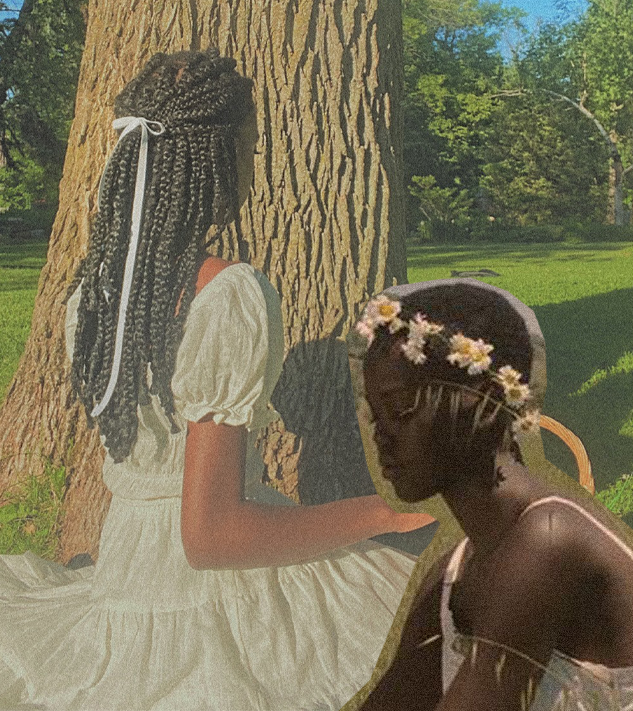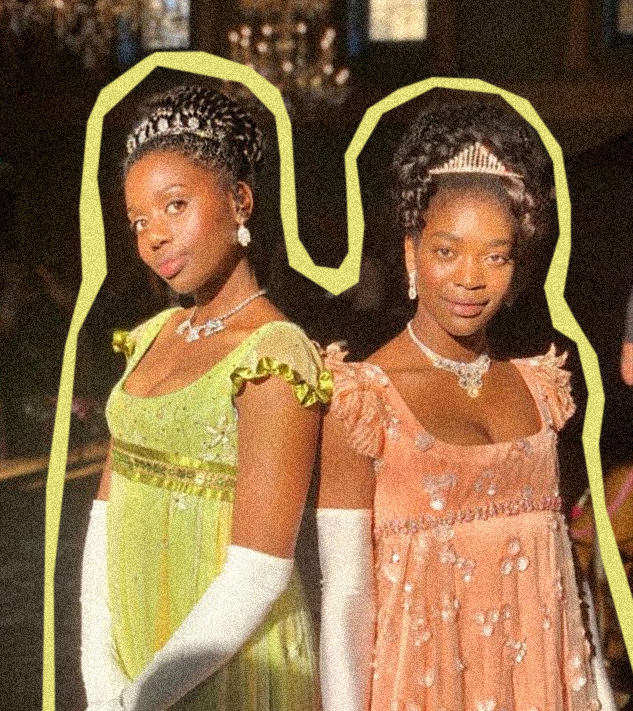In Search of a Soft Life - Exploring the Roots of this Gentle Aesthetic
In the realm of social media, where trends come and go at dizzying speed, one aesthetic has taken centre stage with its rapid ascent: the soft life trend. At the time of writing, the #softlife TikTok hashtag has 931 million related videos. The #softgirl hashtag and the #softblackgirl hashtag have 2.4 billion and 9.7 billion related videos respectively. From TikTok to Instagram, this vibe shift has captivated the masses through its pastel hues and luxury-tinged connotations, but beneath the surface lies a deeper meaning—one that originated in the Black community and has since spilt over into Western consciousness.
Originating on the Nigerian influencer side of social media, the concept of soft living has gained widespread popularity. The soft life, as it's known, goes beyond mere minimalist aesthetics of deliberately feminine looks in pastel and pink shades; it describes a way of living—a life of enjoyment and comfort while consciously limiting stress. It dares us to imagine what a life of ease would look like and challenges us to put it into practice. And after the chaos of the last few years, I know I’m not alone in seeking solace in a soft life.
Living a soft life is the ultimate antithesis to the productivity-centric society we live in. But why has this trend gained such momentum, and why now? The answer lies in the #softblackgirl phenomenon, which emerged as a powerful backlash against the pervasive "strong black woman" stereotype that's firmly embedded itself in culture. It offers a radical shift in how we view softness today and who gets to participate in such a trend.
___STEADY_PAYWALL___
For too long, Black women have been denied the opportunity to envision life on their terms. But the soft life provides a way out, a safe space where they can do the least and not get flack for it. It celebrates the diversity and nuance of the Black woman’s experience, emphasising self-love and tenderness as life-altering acts. At its core, soft living is about taking time to relax, and placing health and wellbeing above all else—something that's been largely unthinkable for Black women.
Contrary to its name, however, adopting a soft life isn’t easy. The opportunity to live a soft life on our terms is an enticing prospect, but it can often feel out of reach as it requires enduring the growing pains that come with a slowed-down change of pace. In a society obsessed with speed, going faster isn't always better – but many of us have become accustomed to checking off boxes on a never-ending to-do list. That can feel like it makes living a soft life another unattainable goal we’ll most likely never achieve.
The soft life is a rebellion against hustle culture and the daily grind. It rejects the notion that struggle, stress, and anxiety are necessary benchmarkers in defining success. Instead, it urges us to find joy in every day through acts such as making time for leisurely walks, slow bike rides, mindful exercise such as yoga, and whatever brings people peace. It's essential to remember that the essence of an actual soft life lies in balance, self-awareness, thoughtfulness and joy, even while social media is flooded with soft life advice, lifestyle hacks, and trend-driven content.
Indeed, soft living has been diluted as it has moved away from its original intention. In an era dominated by consumerism, the online portrayal of the soft life often appears as a luxurious fantasy—a world of expensive bags, fancy cars, and lavish vacations. But true softness is not defined by material possessions; it's a state of being, a feeling that comes from being purposeful in our actions.
Living a soft life on the internet, amongst the harsh terrain of our digital realities, is complex. While it may appear all sunshine and roses, it can become all about the performance aspect of being online, much like other idyllic digital trends, even though this is actually at odds with the philosophy. The heavy emphasis on material possessions and financial costs also raises questions about its accessibility. The soft life should be attainable for everyone, regardless of their socioeconomic status or financial means, but it doesn’t always look that way.
As we are bombarded with visions of slow, purposeful living, it becomes evident that the soft life holds diverse and nuanced meanings. It extends beyond aesthetics, offering a more meaningful way of being than succumbing to the throes of capitalism. It's about establishing healthy boundaries that cultivate daily enjoyment, comfort, and ease. Rather than viewing it as an achievement to unlock, the soft life should be seen as a mindset that allows us to enjoy attainable, actual wellness without overcomplicating it.
Soft life aesthetics typically haven’t embraced minority communities, and as a mixed-race woman, it isn’t something I ever thought I’d be able to achieve. But while the soft life has predominantly been associated with white creators, the version promoted by Black creators that focuses on soft living as a lifestyle makes it feel more attainable and inclusive. We should embrace it not as a fleeting fad but as a movement that encourages us to find balance, prioritise our needs, and reclaim our agency in shaping the lives we truly desire, whatever that may look like.
Words: J’Nae Phillips


